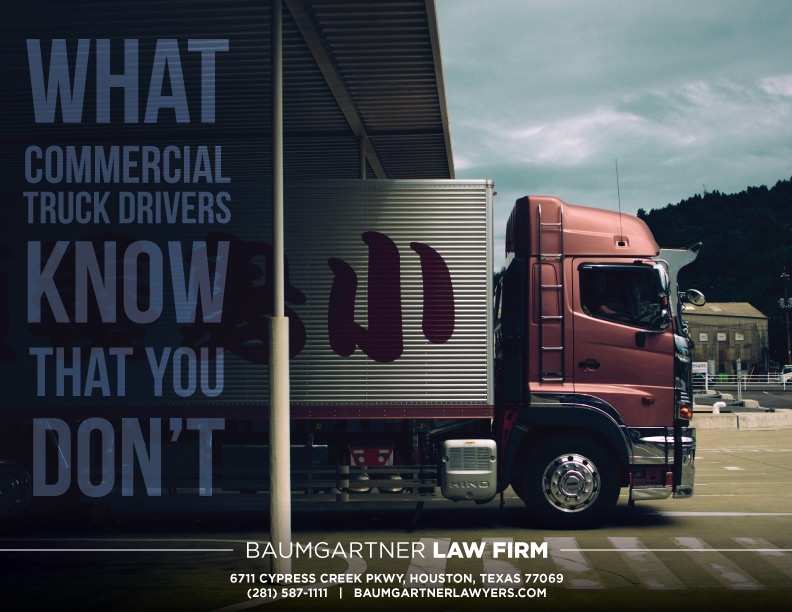
 Request FREE consultation - 1866-758-4529
Request FREE consultation - 1866-758-4529 

According to the American Trucking Association, there are approximately 3 1/2 million professional truck drivers in the United States alone.
Driving down any highway in America, you are bound to see 18-wheelers virtually everywhere. The main interstate highways have the highest percentage of commercial vehicles traveling in relation to other traffic.
There is a list of things that professional truck drivers know that you may not:
Every tractor-trailer driver knows that they have areas in front, behind, and on both sides of the rig where they are unable to see other motorists. This is especially true for smaller vehicles, which often lead to many blind spot accidents.
Motorists traveling around a tractor-trailer should be careful to stay out of the blind spots where the commercial truck driver may not know they are present.
Big rigs can take up to 40% more distance to stop than a passenger car or pickup truck. Adverse weather conditions or poor brake maintenance can significantly increase the stopping distance. All drivers face a perception and reaction time that affects passenger cars and commercial drivers equally.
It is the braking distance of the semi-truck that leads to many rear-end truck crashes. After applying the brakes and under perfect conditions, a big rig can take 216 feet to come to a complete stop when traveling at only 55 miles per hour. Empty trucks require more stopping distance than loaded trucks.
If you have a big rig following closely behind you, consider speeding up or allowing the truck to pass you to reduce the chances of a sudden stop causing a truck wreck. Many rear-end truck accidents happen simply because the truck is following too closely.
Because a big rig can weigh up to 80,000 pounds and a passenger car typically weighs 5000 pounds or less, physics dictates the big rig wins, and the passenger car loses. Vehicles coming into direct contact with a tractor-trailer at highway speeds uniformly end up with serious injury and loss of life. Conversely, because the truck has a significant weight and size advantage, the odds of the commercial truck driver being injured in a crash with a passenger car, barring a rollover, are relatively slim.
A person is injured or killed in a truck accident in the United States every 16 minutes. The DOT estimates that there are over 500,000 truck accidents each year in the US.
Not only must truck drivers follow the rules of the road that apply to every motorist, but they must also follow the safety rules contained in the Federal Motor Carrier Safety Regulations, which regulate such things as the trucker’s ability to maintain the vehicle, etc.
The safety regulations also cover situations such as driving in adverse conditions, a safety checklist to ensure the safety of the big rig, and requirements for the motor carrier to implement safety policies for both the driver and equipment.
The truck safety regulations require the truck driver and the company to be covered by commercial liability insurance with a minimum coverage of $750,000 and up, depending on the commodities carried.
In practice, larger trucking companies often have multiple layers of insurance, typically including a one-million-dollar policy with additional layers of excess coverage above the base liability policy. It is not uncommon for trucking companies to have policies exceeding $5 million. With the increased potential for serious injury or fatal accident, the safety regulations require sufficient insurance coverage.
Most trucking companies have established procedures for their drivers to follow in the event of an accident. Handbooks and other training reflect the company’s desire that the truck driver not admit fault or give statements to third parties at the scene. Many also require photographs and intercompany forms to be completed by the driver, covering details such as the other parties involved, a brief statement of what happened, and any witnesses to the crash.
Larger companies may also have a “quick response team” that they dispatch to the scene of an accident shortly after being notified of a potential liability issue.
Related Resources:
Following too close and truck accidents
Avoiding an 18-Wheeler Accident in Houston
Blind spot accidents with 18-wheelers